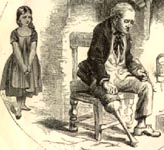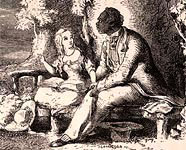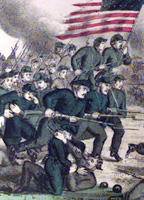Tangled Roots
These more than 200 documents explore cultural connections between the experiences of African Americans and Irish immigrants in America. Materials relate to individual leaders, historical events, economic, political, and social factors, and cultural achievements. A section entitled "Making Connections" offers 15 questions about historical events and people that represent the intertwined histories of Africans and Irish in America.
Other topics include the end of English participation in the slave trade, the emergence of the nativist Know-Nothing Party in the 1850s, and Ku Klux Klan activities against Catholics and blacks after the Civil War. A section on "Acceptance" explores perceptions of individual and group identities and four timelines focus on displacement, oppression, discrimination, and acceptance in America. "Voices" provides a sample of 13 public statements and interviews on ethnicity and race from ordinary modern Americans. The site also provides a bibliography; an essay by writer James McGowan, a black American with an Irish paternal grandfather; and links to related websites.



